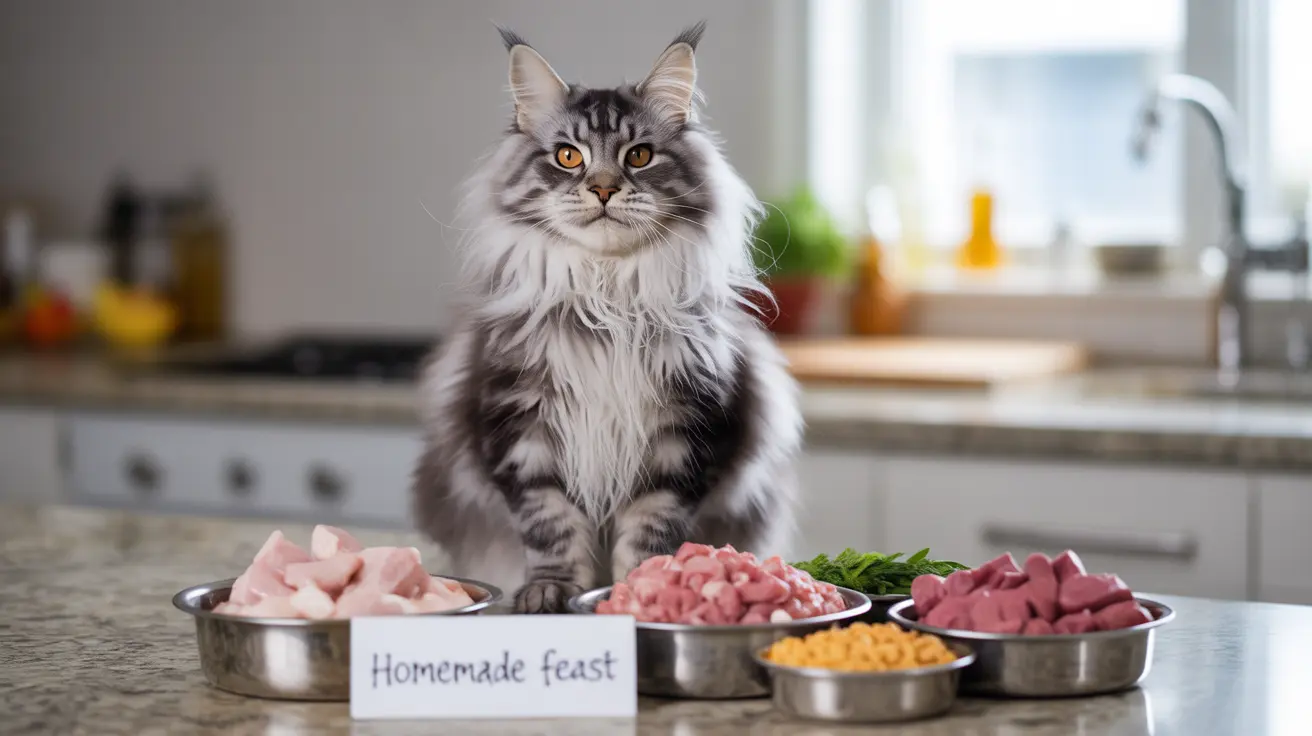Introduction
Creating homemade cat food recipes has become increasingly popular among dedicated pet parents seeking better control over their feline friends' nutrition. As cats are obligate carnivores, crafting species-appropriate meals at home can offer significant benefits when done correctly. This comprehensive guide will walk you through the essential components of homemade cat food, focusing on nutritionally balanced recipes that cater to your cat's carnivorous nature.
However, it's crucial to understand that making cat food at home isn't as simple as cooking chicken and calling it a day. Proper nutrition requires careful attention to ingredients, proportions, and essential supplements to ensure your cat receives all necessary nutrients for optimal health.
Understanding Your Cat's Nutritional Needs
Cats require specific nutrients that must be present in precise amounts for optimal health. As obligate carnivores, they need:
- High-quality animal protein (50-52% of diet)
- Moderate amounts of fat (30-35% of diet)
- Minimal carbohydrates (under 10% of diet)
- Essential amino acids, including taurine
- Vitamins A, D, E, and B complex
- Minerals such as calcium and phosphorus
Essential Components of Homemade Cat Food
Quality Protein Sources
The foundation of any homemade cat food recipe should be high-quality protein sources such as:
- Chicken (dark and white meat)
- Turkey
- Rabbit
- Duck
- Lean beef
Vital Organ Meats
Organ meats provide essential nutrients and should comprise 10-15% of the diet:
- Liver (limited amounts)
- Heart
- Kidney
- Gizzards
Proper Supplementation
Even with quality ingredients, homemade diets require careful supplementation to be complete:
- Taurine supplement
- Calcium (if not using ground bone)
- Essential fatty acids (fish oil)
- Vitamin B complex
- Vitamin E
- Trace minerals
Safe Preparation and Storage
Proper food safety is crucial when preparing homemade cat food:
- Use fresh, human-grade ingredients
- Clean all surfaces and equipment thoroughly
- Store portions in airtight containers
- Refrigerate up to 3 days
- Freeze excess portions for up to 8 weeks
Transitioning to Homemade Food
When introducing homemade cat food:
- Transition gradually over 7-10 days
- Monitor your cat's weight and energy levels
- Watch for any digestive issues
- Keep detailed records of your cat's response
Frequently Asked Questions
How can I make a nutritionally balanced homemade cat food recipe that meets my cat's specific health needs?
Work with a veterinary nutritionist to create a recipe tailored to your cat's age, weight, and health conditions. They can provide precise measurements and supplement recommendations to ensure nutritional completeness.
What are the essential ingredients and supplements needed in a homemade low-carb chicken cat food recipe?
Essential ingredients include chicken meat, organ meats (especially liver), taurine supplement, calcium, vitamin B complex, vitamin E, and fish oil. The exact amounts should be determined by a veterinary professional.
What are the risks and benefits of feeding my cat homemade food compared to commercial diets?
Benefits include ingredient control, fewer preservatives, and customization for health conditions. Risks include nutritional imbalances if recipes aren't properly formulated and the time commitment required for preparation.
How do I safely prepare and store homemade cat food to avoid foodborne illness?
Use fresh ingredients, clean equipment, and proper food handling techniques. Store portions in the refrigerator for up to 3 days or freeze for up to 8 weeks. Always thaw frozen portions in the refrigerator.
Why is it important to consult a veterinary nutritionist before switching my cat to a homemade diet?
A veterinary nutritionist ensures your recipes meet all nutritional requirements, preventing deficiencies that could lead to serious health issues. They can also adjust recipes based on your cat's specific needs and medical conditions.
Conclusion
Creating homemade cat food recipes can be a rewarding way to provide your feline companion with high-quality nutrition. However, success requires careful planning, proper supplementation, and professional guidance. Always consult with a veterinary nutritionist before starting a homemade diet, and monitor your cat's health closely during the transition and beyond.






